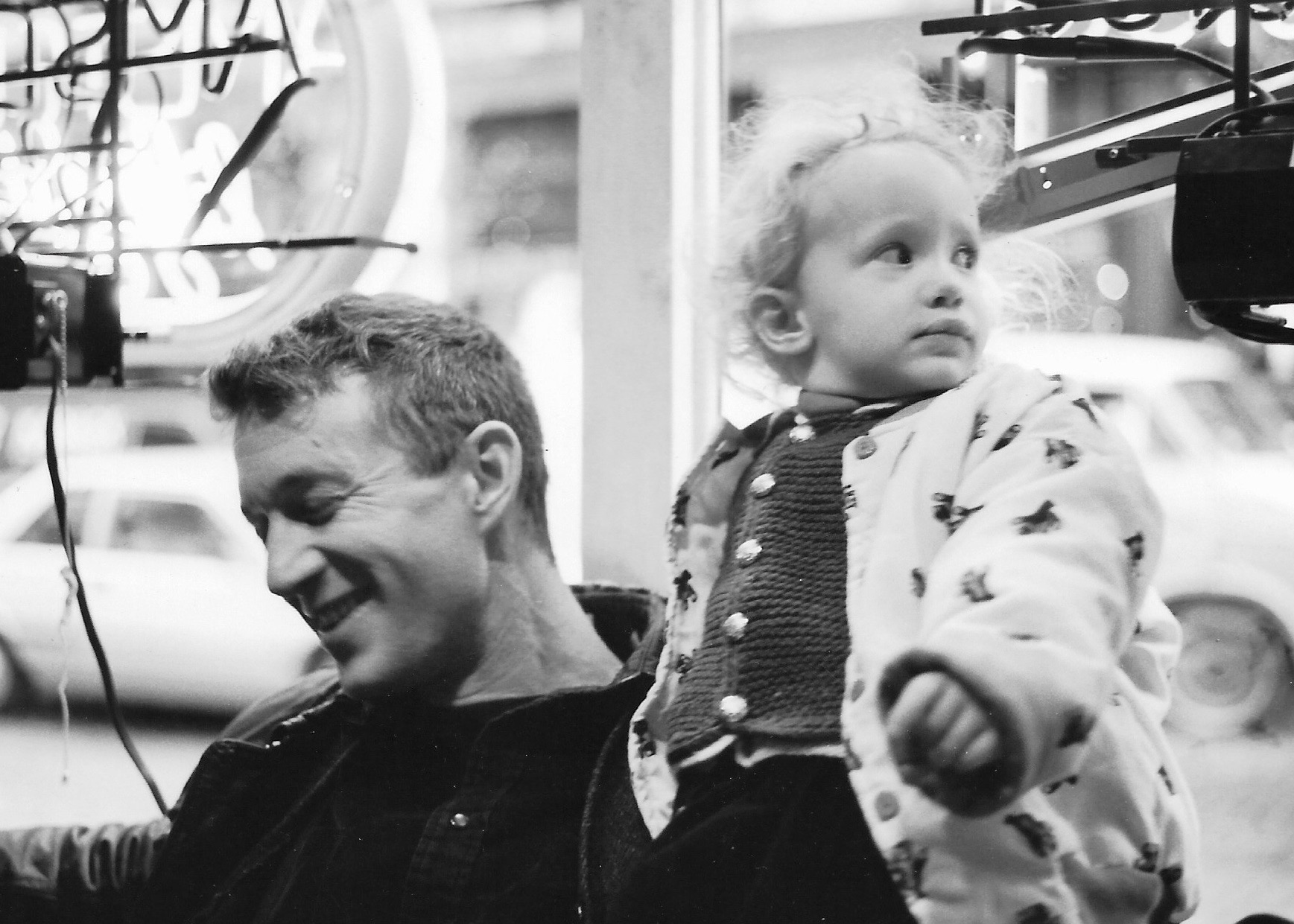interviews
Looking Everywhere for a Way to Deal with Death
Essayist Thomas Mira y Lopez on why writing about grief sometimes means you have to sneak into a defunct cemetery

Something uncanny happens in these photographs of the dead,” writes Thomas Mira y Lopez in The Book of Resting Places (Counterpoint), his debut collection of essays. “Daguerreotype exposures took notoriously long to develop, and living subjects needed to sit still for prolonged stretches, minutes sometimes with their heads braced and bodies propped perfectly still…so that it became difficult to determine, when looking at a photo, just who is the corpse.”

Whether he’s sneaking into a defunct cemetery or racing between hospital and church, among preserved bodies in a shop outside Tucson or the Roman catacombs, Mira y Lopez shows the restlessness that makes living subjects of grief and contemplation — even as one tries to lay the dead to rest in monuments, mementoes, saplings, stars. The result is a book of remarkable range, insight, and style, which, as Mira y Lopez says below, works “to consider then reconsider then reconsider the reconsideration” of how we live and die. We corresponded about the use of research in lyric essays, persona, and the role of reportage in memoir.

Zach Savich: This book ranges among many places, many topics, but the essays feel capaciously steady, able to discuss ancient dental remedies and intricate memories on the same page. How did you arrive at this style? I’m curious, especially, about the mix of informational reportage and intimate memoir — how do you manage that balance? Juxtaposition often works by rupture, but in many of these essays it feels unusually seamless.
Thomas Mira y Lopez: The earliest essays I wrote in the book started out almost as a pin the metaphor on the donkey. I wanted to find some way of writing about memory that wasn’t just writing about myself — this is the time-honored answer that anyone who’s written a lick of personal essay must be obligated to give, whether it’s true or not — and metaphor was an easy way to pump significance, or seeming significance, into the narrative. I’m a superstitious, ritualistic person, my mother as well, and so I inherited a bunch of readymade symbols, substitutes, and monuments: my father’s tree, Egyptian mastaba as storage unit, sunspots. I set off to use these as parallels or responses to the personal, a game of Pong maybe.
Maybe successful essays are just ones where the author covers their tracks well enough to hide their initial idiocy.
But then there comes a moment when you ask what the symbol means — I mean tangibly, like what is an Ohio buckeye or a horse chestnut in actuality? What are their dimensions, proclivities, susceptibilities? You decide to find that out, and that in turn obligates you to reassess the personal, the meanings from that memory you think you already know. For the reportage, I was mostly just playing a character. I would go to sites and make up a story about the tension between the self I presented at the site and the self I present on the page. It’s kind of you to say the stories feel seamless. Maybe successful essays are just ones where the author covers their tracks well enough to hide their initial idiocy, where the hot air is collapsed yet there’s still space on the page.
Eileen Myles‘ Memoir Is Much More than Just a Dog Book
ZS: Did particular writers or books serve as models, as you were developing this approach? Did you feel there were gaps — or failings — in how people often write about death and grief?
TMYL: I tried to stay away from books about death and grief just as, if I’m trying to capture my own voice in a piece, I stay away from authors whose style I know I’ll end up trying to imitate. Many felt bound by a linearity I wasn’t interested in or they were attempting something, like Anne Carson’s Nox, I knew I couldn’t match. But the idea of place, or places, came to me before the concept and so I looked towards collections that moved with ideas that could swim several different strokes: John D’Agata’s Halls of Fame; Ander Monson’s collections; Joni Tevis’s The Wet Collection; Valeria Luiselli’s Sidewalks. And I looked towards books that helped me understand cultural attitudes towards death: Thomas Laqueur’s The Work of the Dead and Michel Ragon’s The Space of Death, in particular. I imagine there’s a nice little anthology of cemetery essays as well: Luiselli’s “Brodsky’s Room and a Half,” Wendy S. Walters’ “Lonely in America,” Randall Kenan’s “Finding the Forgotten,” Kendra Atleework’s “Dawn of Tomorrow.”
ZS: Focusing on place offers some productive displacements in The Book of Resting Places, as do metaphor and persona. This can help guide the essays to implicit, suggestive, and unexpected conclusions. At other times, these essays can be startlingly direct. I’m thinking of lines like the last sentence of “The Eternal Comeback,” an essay about cryonic preservation, among other things. It reflects on a recurring dream about your deceased father: “This dream and his return will come back for as long as I live, as long as I should live, which will hopefully be not a minute longer than my memory binds me to a body and mind.” This might relate to the tension between showing the staging and covering your tracks; could you comment on moments like this one, when the essays consider big questions and differing interpretations, but offer stark assertions?
TMYL: Well, I would say it depends which assertion you’re referring to in the quote. There’s the statement that the dream will continue to recur and then there’s the statement that I don’t want any form of my consciousness to continue after death. The latter is a rebuttal, albeit a gentle one, to the goal of cryonicists who seek exactly that. It’s never really a question in “The Eternal Comeback” about whether I myself will seek out cryonic preservation — if someone wanted to gift me $80,000, then maybe we’d be talking — but one of the things I try to keep in mind is that essays are also arguments, that I can make room as a writer for their rhetoric and polemics. That might seem obvious to say, but my natural state is to consider, then reconsider, then reconsider the reconsideration. It gets recursive. So once in a while it can feel satisfying to just throw up one’s hands and say, fuck it, this is what I mean, I hope my head never gets frozen and stuck in a cylindrical tube. At a certain point, we have to walk away and not look back.
My natural state is to consider, then reconsider, then reconsider the reconsideration. It gets recursive.
The first clause of that sentence — the statement that the dream will recur — I can never prove. It’s interesting to be returned to it, to look at the conviction with which I wrote the line and the impasse it creates. It’s just felt emotion, after all. Part of me hopes that the dream of my father doesn’t recur, that the heartache it carries doesn’t come back. And part of me hopes that it does come back because something beats nothing. That balance — between wanting to remember and wanting to forget; between wanting someone’s who died to turn into something else, such as another person or place or metaphor, and wanting the dead to stay dead — feels like an underlying tension to these essays. Sometimes, though, balance slips and we move one way or the other into an assertion.
Though, of course, I hope the assertions aren’t too stark. In the course of my research, I read the Quakers had a saying “false as an epitaph,” and did not mark their headstones with inscriptions. So I’m wary of making any such declarations or summations about a life or a lifespan, which this book, in its way, is.
A New Memoir Offers a Personal Look at How America Fails the Mentally Ill
ZS: To not write only about the self, to favor ideas that “swim different strokes,” to be wary of declarations — these impulses have some things in common. You are also a teacher. What do you tell students who wish to write essays that simply say what happened, perhaps by making declarations about the self in a single stroke?
TMYL: It’s the old “who cares?” question that I break out once or twice a semester, not in a mean way, I hope, always reminding my students I ask myself that question more frequently than any other. I think it’s important that they be able to say what happened — clearly and cogently and with some control — and, as I’m learning more as a teacher, I’m trying to respect the importance of that impulse. Once that’s down, if that’s down, then it becomes a question for me of, well, what else could have happened, what didn’t happen, why did or didn’t it happen. An attempt to broaden that impulse — how else did the same thing happen at different times and places, what else was going on when it happened — so that the self becomes not just a self, broadens into something much larger and more pleasurable. My hope is that, if students can ask those questions of themselves, they can ask those questions of the narratives and declarations they’ve written.
Support Electric Lit: Become a Member!
Lately, I’ve had difficulty with the idea of relatability when it comes, not to writing, but reading. It seems a frequent point, both with respect to students’ comments and the culture at large, is to say “Oh, I had a dog too, so I was able to relate to this,” or “I’ve never been to an accordion festival before so I wasn’t sure if I’d be able to relate to this.” I want to respect each individual’s background but also: “Who cares? It’s not about you.” Though it is, also, of course, about you. I’ve had this discussion with other teachers, and one, Sarah Minor, whom you know, tells her class that when readers comment upon the relatability of the piece to their own life or not, they’re not making a comment about the essay but a comment about themselves. And not just a comment about themselves, but the same simple self-declarations one tries so assiduously to avoid.
Maybe this goes back to where we began. Because while I’m searching for metaphors all over this book, I’m also making a metaphor of myself, and my own experience. Not all readers will relate to that experience — I certainly hope they won’t; what a dull book that would be — but maybe they’ll find room to exist in not quite one self and not quite the other.










